Are you contemplating a sojourn to Lisbon? Intrigued by what the Portuguese capital has to offer?
Let us guide you through the tapestry of experiences that make Lisbon not just a city, but a journey. Our connection to Lisbon is woven with the threads of youthful discovery, where university halls were our universe, and every dream seemed within grasp.
Over 15 years, we laid down the roots of our aspirations here, each year imbued with intensity and a zest for life that only Lisbon could inspire.
Returning to Lisbon is akin to a pilgrimage, a journey back to a place that, despite the passage of time, still feels intimately ours.
It’s more than just visiting an old haunt; it’s about reacquainting with a part of ourselves that forever resides in these streets.

- Where is Lisbon located?
- Map Featuring Tourist Attractions in the Portuguese Capital
- Exploring Lisbon: A Guide to Discovering the Capital
- Three-Day Lisbon Exploration Itinerary
- Prominent Attractions Surrounding Lisbon
- Must-Do Experiences and Tours in Lisbon
- Where to Dine in Lisbon
- Cafés and Patisseries in Lisbon
- Accommodation Options in Lisbon
- Getting to Lisbon
- Navigating Lisbon
- Best Time to Explore Lisbon
- Recommended Stay Duration for Lisbon
- Useful Lisbon Tips
Where is Lisbon located?
Lisbon is in the central part of Portugal, to the right of the Tagus River. It is approximately 300 km away from the Algarve region and 400 km from the northern border with Spain.
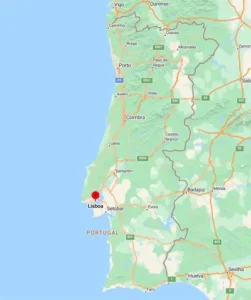
Map Featuring Tourist Attractions in the Portuguese Capital
Using the Map:
- Accessing the list of locations: Click on the upper left corner of the map to view the list of places.
- Zooming in on the map: Click on the upper right corner of the map. This action will enlarge the map for better visibility.
- Saving to your Google Maps: Click on the star icon to save the map to your personal Google Maps for future reference.
Celebrated Attractions – Lisbon’s Top 3
- Must-See Sites: Oceanário | Mosteiro dos Jerónimos | Torre de Belém
- Unforgettable Experiences:: Pasteis de Belém | Ouvir fado no Clube de Fado | Quake Museu do Terramoto de Lisboa
- Restaurants: Maria Catita | Solar dos Bicos | Lucimar
- Accommodation: €€€€€ Hotel Avenida Palace | €€€ VIP Executive Eden Aparthotel | Residencial Flor dos Cavaleiros
- Practical Tips: Como chegar | Adquira o Lisboa Card. | Leve sapatos confortáveis.
Exploring Lisbon: A Guide to Discovering the Capital
It’s hard not to perceive the city as an enchanting playground. Yet, instead of cotton candy, we indulge in pastéis de nata.
In the heart of it all, you’ll find Baixa and Praça do Comércio, where resilient yellow trams navigate the undulating hills ceaselessly.
High above, the São Jorge Castle majestically presides over the medieval Alfama. To the west, the romantic charm of Chiado and the distinctive allure of Bairro Alto. Here, day gracefully transitions into night, and as for the night… well, it effortlessly ushers in the morning.
In Belém, we honour Portugal’s splendid historical legacy and the Age of Discoveries. And at Parque das Nações, we catch a tantalising glimpse of the future.
1. Praça do Comércio

We, as visitors, perceive Praça do Comércio as Lisbon’s central square, rich with profound historical significance. Once the site of the Royal Palace, a magnificent structure tragically reduced to rubble by the devastating 18th-century earthquake. Marquês de Pombal, the visionary behind the city’s rebirth, meticulously restructured the downtown area into the splendid layout we now admire.
As we meander through this grand square, our senses are delighted by the harmonious blend of government edifices and delightful cafés and restaurants, making it an absolute highlight of our visit to the capital.
At its core, an imposing statue of King José I, a poignant tribute to the monarch who presided over that remarkable bygone era, stands as a testament to Lisbon’s enduring legacy.

As we ventured southward, our path led us to the Cais das Colunas, a marble staircase gracefully framed by two majestic columns beside the riverside.
Here’s a handy tip: In the square, there’s a bar called Museu da Cerveja, where we had the delightful opportunity to savor beer sangria.
Why beer, you may wonder? It’s splendid. Sangria? Equally delightful. But together? It was nothing short of a stroke of genius.
2. Rua Augusta

Leaving Praça do Comércio, we made our way to the Rua Augusta Arch, adorned with statues of Vasco da Gama and the Marquês.
We decided to ascend to the viewpoint atop the arch, which required a ticket priced at €3.5. The gusty wind attempted to playfully sway us, but the breathtaking views of Lisbon made it all worthwhile.
As we strolled beneath the arch, we found ourselves on Rua Augusta, a charming pedestrian street bustling with shops, restaurants, and talented street performers.
3. Elevador de Santa Justa
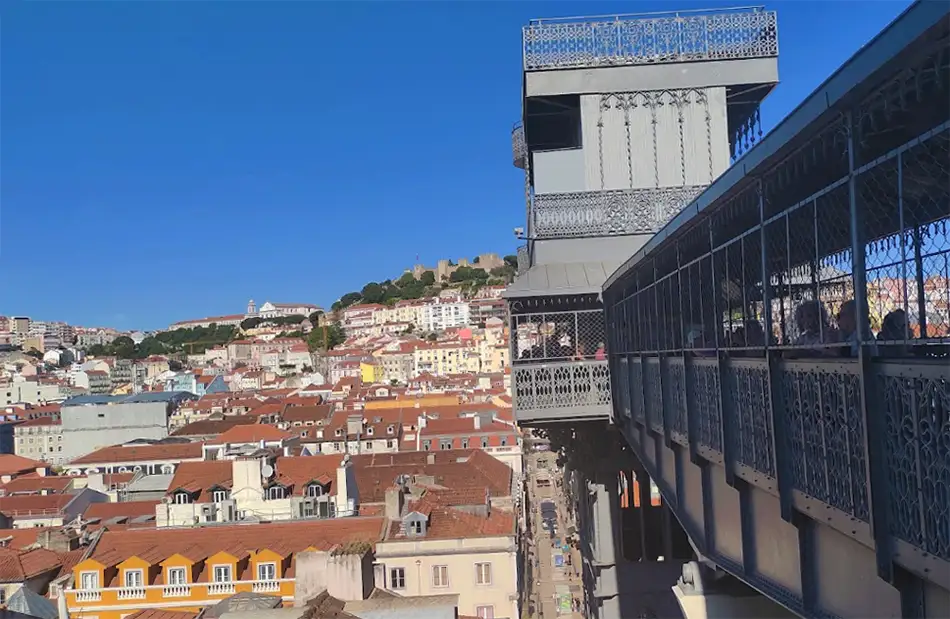
At one of the corners, we stumbled upon the elevator, dating back to 1902, designed by a Portuguese disciple of the renowned engineer Gustave Eiffel (yes, the one behind Paris’ iconic Eiffel Tower).
From the summit of the Santa Justa Elevator, we were granted access to a splendid viewpoint, offering a sweeping 360° panoramic vista of Lisbon.
Here’s a nugget of wisdom: Remember that advice you often hear about avoiding long elevator queues? It’s sage advice! We suggest visiting in the late afternoon. The elevator operates from 7 am to 10:45 pm, providing ample time.
A ticket costs €5.3 (children enjoy free admission).
For those planning an extended stay in Lisbon, the Lisboa Card could be a valuable consideration. It includes public transportation and admission to various attractions, including the Monastery and Belém Tower.
4. Alfama
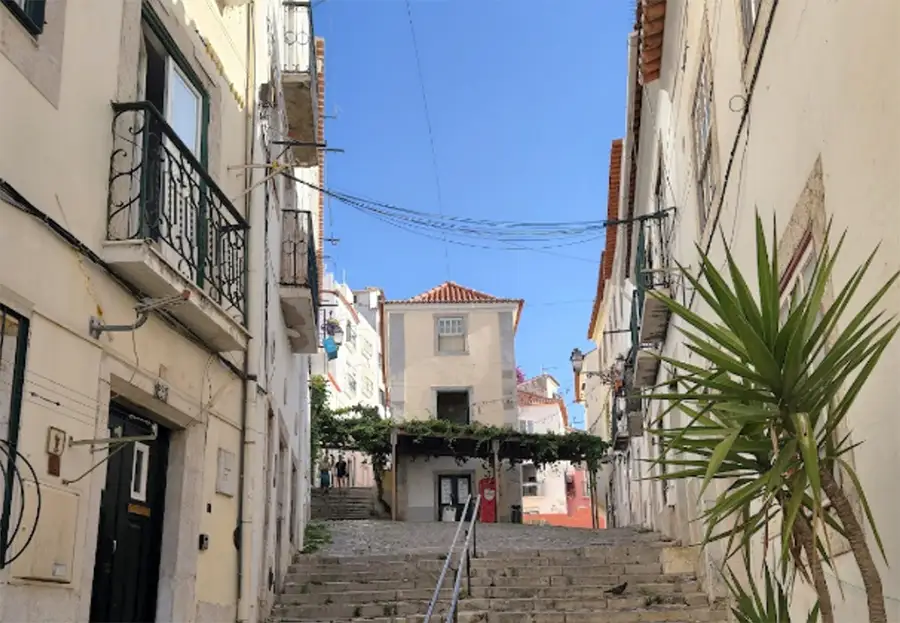
Alfama stands as Lisbon’s oldest district, once the grand epicenter during the Moorish era and later inhabited by the port-connected community.
Here, it feels as though time has frozen: children playing in the winding streets and on the steep staircases.
It serves as the vibrant heart of the Popular Saints’ Festivals, especially on June 12th.
Nestled on Alfama’s hillsides, you’ll find numerous viewpoints, including the Santa Luzia Viewpoint, with its proximity to the remnants of ancient Moorish walls, and the Portas do Sol Viewpoint.
But before ascending through Alfama towards the Castle, our journey takes us to the Sé Cathedral.
5. Sé Catedral de Lisboa
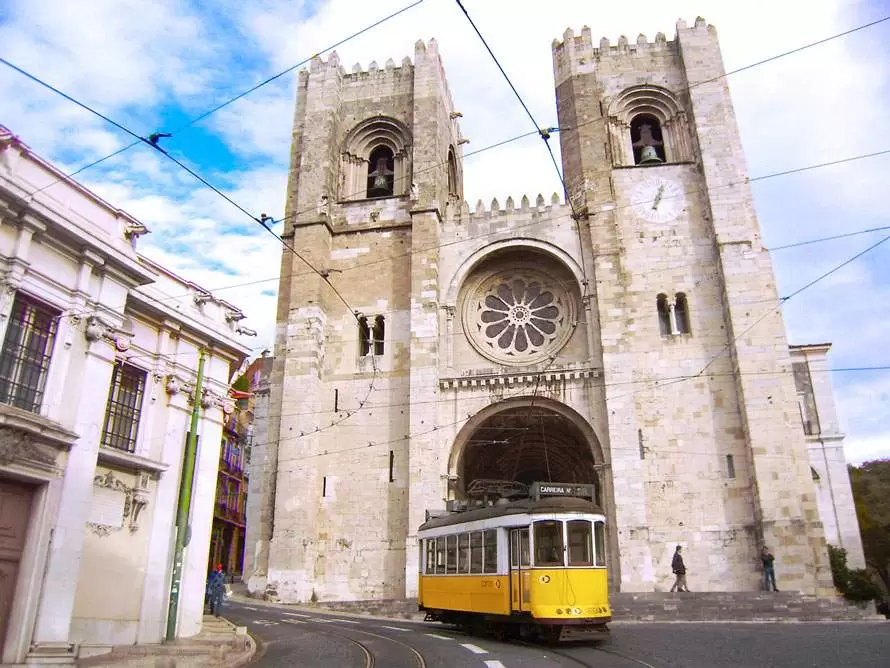
Lisbon Cathedral, known as Sé Catedral, holds the esteemed title of being the city’s oldest and most iconic church. It welcomes visitors daily, hosting Sunday morning masses.
The cathedral boasts a more fortress-like aura than one of grace, mirroring the spirit of its time: the era of crusades. It was commissioned by Dom Afonso Henriques, Portugal’s first king, back in 1147.
A nominal entrance fee allows us to step inside the church and explore its treasures, including the High Choir, Balcony, and access to the Cathedral Treasury.
Here, we also find the beloved Tram 28, making its way to São Jorge Castle. This tram is a timeless Lisbon gem, having navigated the city’s streets for over a century.
6. Miradouro de Santa Luzia & Miradouro das Portas do Sol
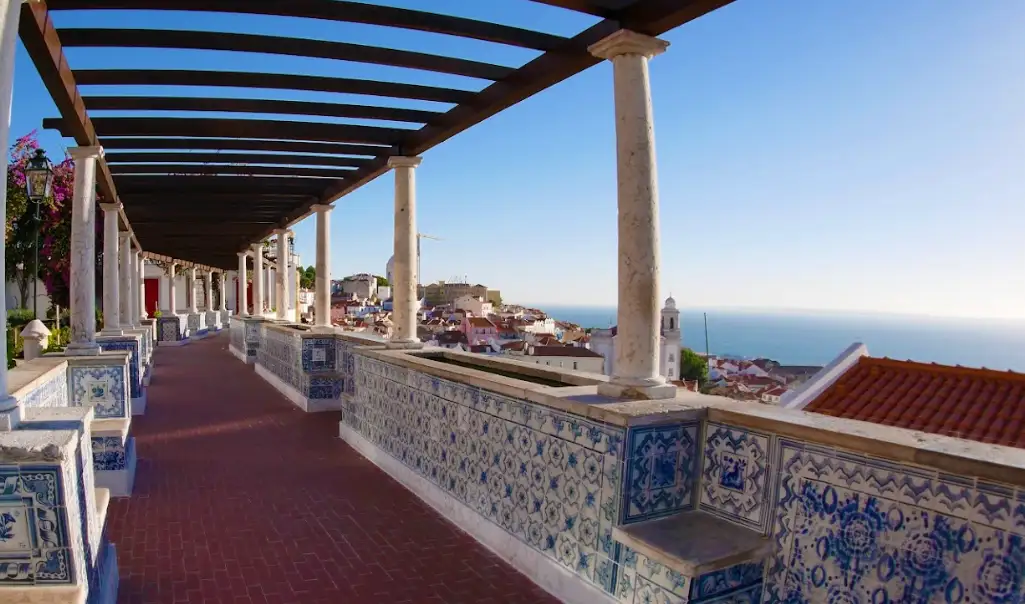
From the Santa Luzia Viewpoint in Alfama, we indulged in panoramic vistas of tiled rooftops and distant ships gracefully navigating the waters of the Tagus River.
Our amazement grew as we witnessed the vibrant activity, particularly between noon and five in the afternoon when cruise ship tourists flocked to the area.
Right alongside, we encountered yet another treasure: the Portas do Sol Viewpoint.
Though the view was somewhat similar, it felt like being asked to choose between two delicious cakes. Why settle for one when you can savor both?
Another noteworthy viewpoint is Nossa Senhora do Monte, situated in the Graça district. However, it’s about a 20-minute walk away – a reason why it didn’t find a place in our Lisbon itinerary.
Nonetheless, the Nossa do Monte Viewpoint remains a beloved spot among locals, perfect for those with ample time to relish the beauty of Lisbon.
7. São Jorge Castle
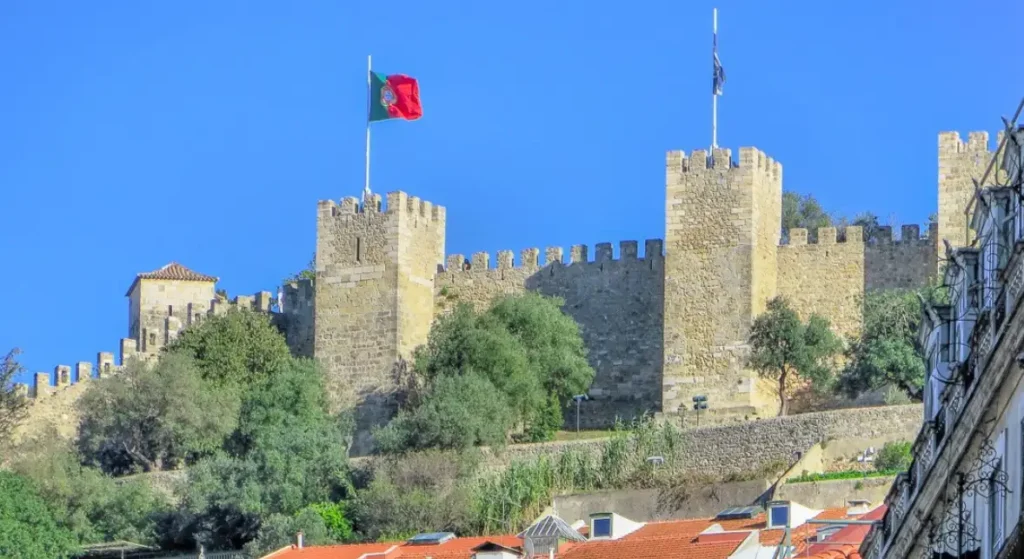
Constructed by the Moors, São Jorge Castle has its origins in the 7th century. It was subsequently seized by Afonso Dom Henriques, with the assistance of crusaders en route to the Holy Land.

The vistas are truly mesmerizing, presenting an astonishing cityscape with the distant Christ the King Statue and the 25th of April Bridge.
For a magical sunset experience, we recommend visiting in the late afternoon. It unquestionably stands as one of Lisbon’s foremost tourist attractions.
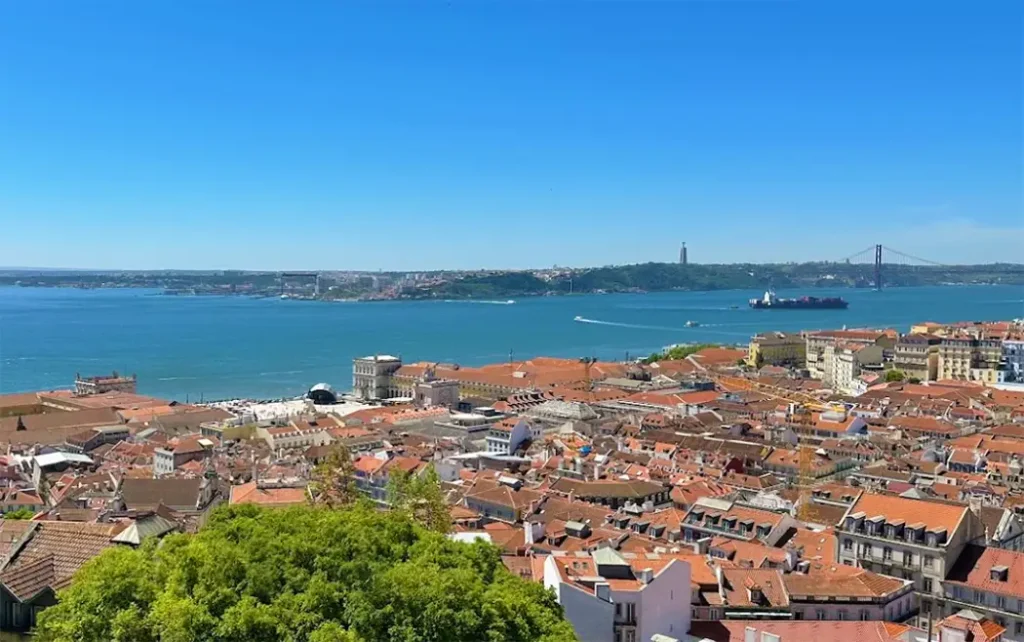
Operating hours are from 10 am to 9 pm, with a standard ticket priced at €15. Children up to 12 years old enjoy free admission. Anticipate long lines, which may require approximately 15 minutes of waiting.
8. Mosteiro dos Jerónimos (Belém)
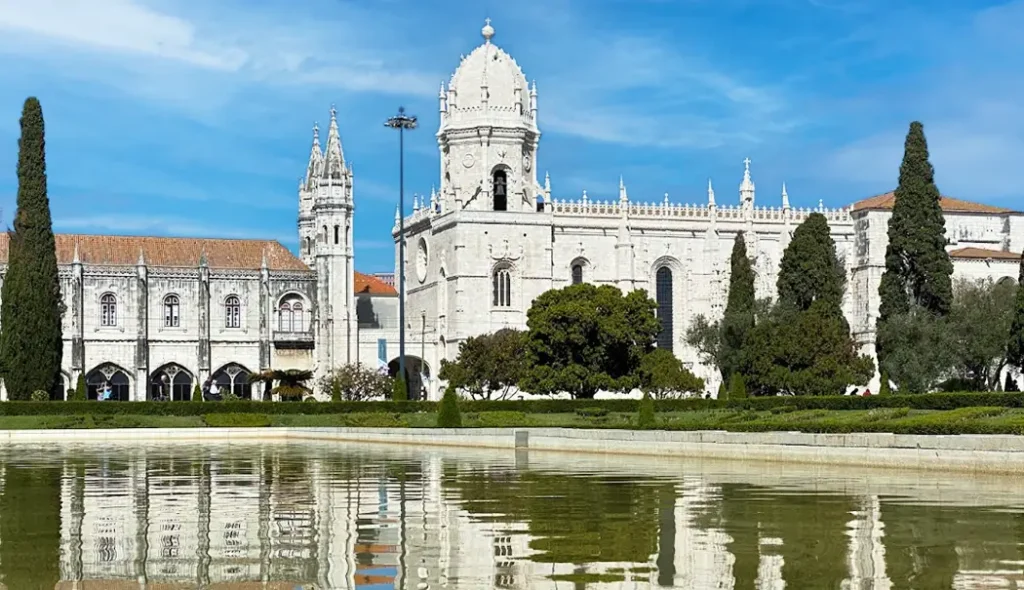
Lisbon is a city of many distinctive neighborhoods, and as we ventured outside the city center, we arrived early in Belém, opting for tram 15, which seamlessly connects the heart of Lisbon to this charming district.
Dating back to the 16th century, the Jerónimos Monastery stands as a true gem of Manueline architecture and proudly holds its UNESCO World Heritage status.
Its exterior offers a tantalizing glimpse of the beauty that awaits inside, where the final resting places of Vasco da Gama and Luís de Camões can still be found.
Opening hours: You can explore its wonders daily from 10 am to 6:30 pm. On Sundays and religious holidays, it opens at 2 pm. A visit to this splendid site is an absolute essential on your Lisbon travel checklist.
9. Belém Tower

The Belém Tower stands proudly as one of the most renowned landmarks in the Belém district.
Constructed in the 16th century along the banks of the Tagus River, it served as a formidable fortress, guarding the city of Lisbon. It earned its well-deserved UNESCO World Heritage status in 1983.

As we gazed around, the Monument to the Discoveries (Padrão dos Descobrimentos) came into view, and in the distance, we spotted the MAAT Museum housed in the former power station.
Our perspective: The interior is notably unassuming. The walls seem to convey a message, ‘Yes, I’m important, but I prefer a more reserved demeanor.’
Opting to skip the queue and save a few coins on the ticket appeared to be a pragmatic decision, granting us additional time to meander through the charming district of Belém.
10. Padrão dos Descobrimentos
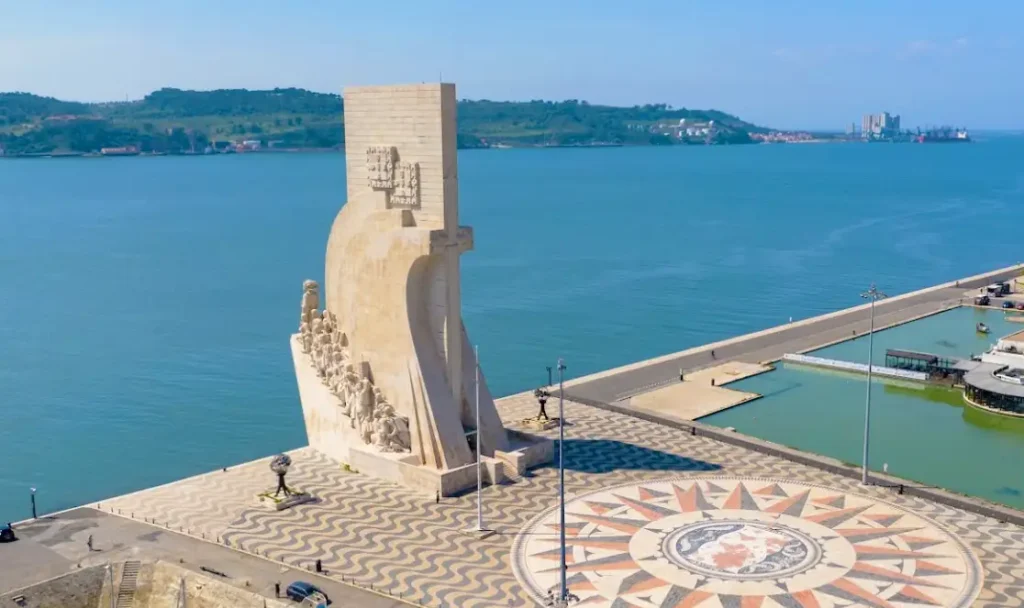
Gaze upon Lisbon’s Monument to the Discoveries, a towering beacon reaching 52 meters into the sky, its very presence a poignant echo of Portugal’s rich navigational history.
This striking structure is more than just an architectural marvel; it’s a reverent nod to the Age of Discoveries, its facade adorned with the sculpted faces of Portugal’s most illustrious explorers, a veritable ‘Hall of Fame’ of maritime pioneers.
Admission and Operation: The monument, a fusion of museum and observation deck, invites adults for €10.00 and adolescents for €5.00, while children under 12 enjoy free entry. Summer visitors can explore from 10:00 AM to 7:00 PM, while winter hours are slightly shorter, closing at 6:00 PM and taking a pause on Mondays.
Our Personal Encounter: Our ascent to its summit proved to be a venture worth every euro spent. Atop, Lisbon unfolded before us in a panoramic spectacle.
We found ourselves immersed in the bird’s-eye view of Belém’s tapestry, each landmark a story unto itself. The Jerónimos Monastery and Empire Square lay sprawled beneath us, while to the east, the 25th of April Bridge stretched across the horizon like a sleeping giant.
With energy still coursing through our veins, we discovered that Belém’s allure didn’t end there.
The National Coach Museum beckoned with its unmatched collection, and the Berardo Collection Museum at the CCB stood as a testament to modern artistic endeavors, each a chapter in Lisbon’s ongoing narrative.
11. Lisbon Oceanarium
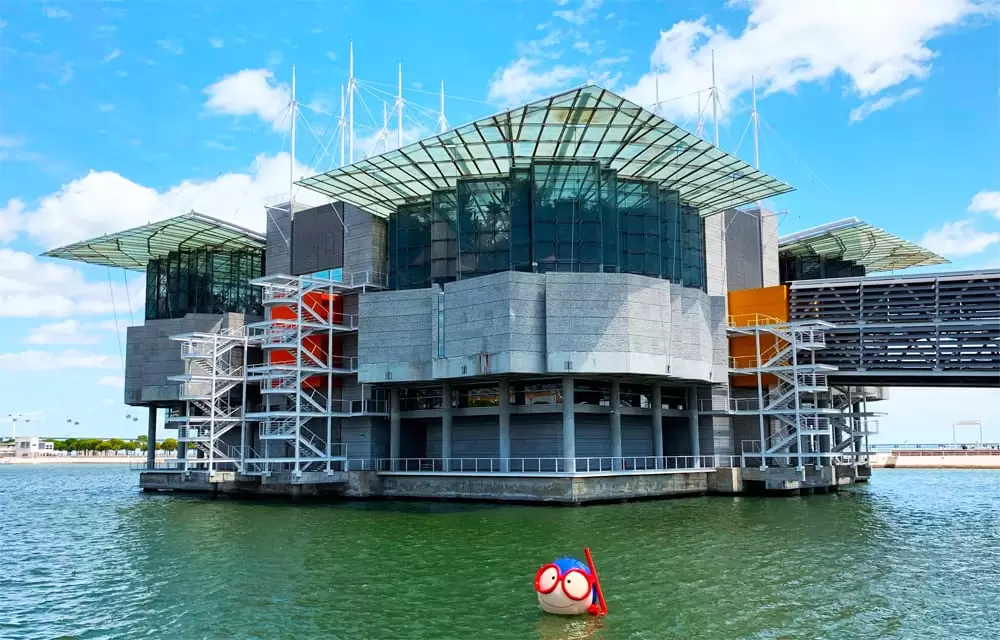
Embarking on a journey across Lisbon, we found ourselves being drawn towards Parque das Nações, a vibrant testament to the city’s ongoing dialogue with its past. Here, the legacy of the Age of Discoveries isn’t just a memory; it’s alive in the very fabric of the streets and buildings, each corner narrating a story of exploration and wonder.
Nestled within this district, the Lisbon Oceanarium emerges as a standout symbol of this legacy. An architectural gem birthed for the 1998 International Exhibition, it stands as a beacon of maritime celebration, easily reached via the city’s red metro line.
A year-round destination, the Oceanarium is an unmissable chapter in any Lisbon narrative. Ranked among the world’s largest, it is a living tapestry of aquatic life, showcasing five ecosystems – from the icy waters of the Antarctic to the warm currents of the Tropical Indian Ocean, culminating in the immersive experience of the Global Ocean tank.
Step inside, and you’re transported into an underwater realm where 500 species weave a vibrant tapestry of marine life. The sharks command a mixture of awe and respect, while the sea otters play their part in lightening the mood with their aquatic antics.
Our Personal Insight: Our visit was more than just a tour; it was an invitation to witness the confluence of nature’s diversity. Our advice? Make it a priority on your Lisbon itinerary – it’s a journey through the heart of the ocean’s mystery and majesty.
12 Lisbon Cable Car
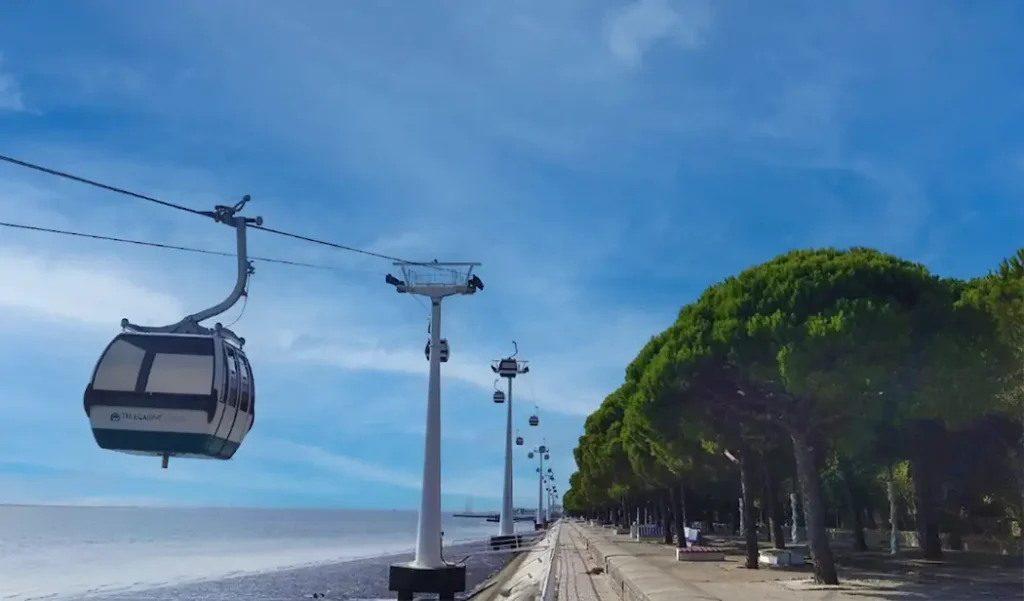
In the heart of Parque das Nações, the Lisbon Cable Car stands not just as a mode of transport, but as a journey into the soul of the park. This ten-minute aerial ride, bridging the expanse of the park, offers more than mere transit; it presents a narrative of the landscape below.
As we embarked on this journey, the cable car transformed into a floating observatory. Below us, the Oriente Station unfolded like a scene from a futuristic novel, its design a testament to Santiago Calatrava’s visionary craft, blurring the lines between functionality and art.
The landscape continued to reveal itself – the Vasco da Gama Shopping Centre, a hub of modern commerce; the Oceanarium, a sanctuary of marine life; the Pavilion of Knowledge, a beacon of learning; and the towering Vasco da Gama Tower, standing as a silent sentinel over the park.
This ride is more than just a simple cable car journey; it’s a prelude to the wonders of Parque das Nações, offering a glimpse into the architectural marvels and cultural treasures that await on the ground.
Visitor Information: The Lisbon Cable Car operates year-round, adjusting its hours to the rhythm of the seasons – from 10:30 AM to 8:00 PM in the summer, and 11:00 AM to 6:00 PM in the winter.
The pricing structure accommodates all ages, welcoming the youngest for free, while offering a one-way journey for €7.50 and a round trip for €9.50 for adults, ensuring accessibility for families and solo adventurers alike.
13. Chiado
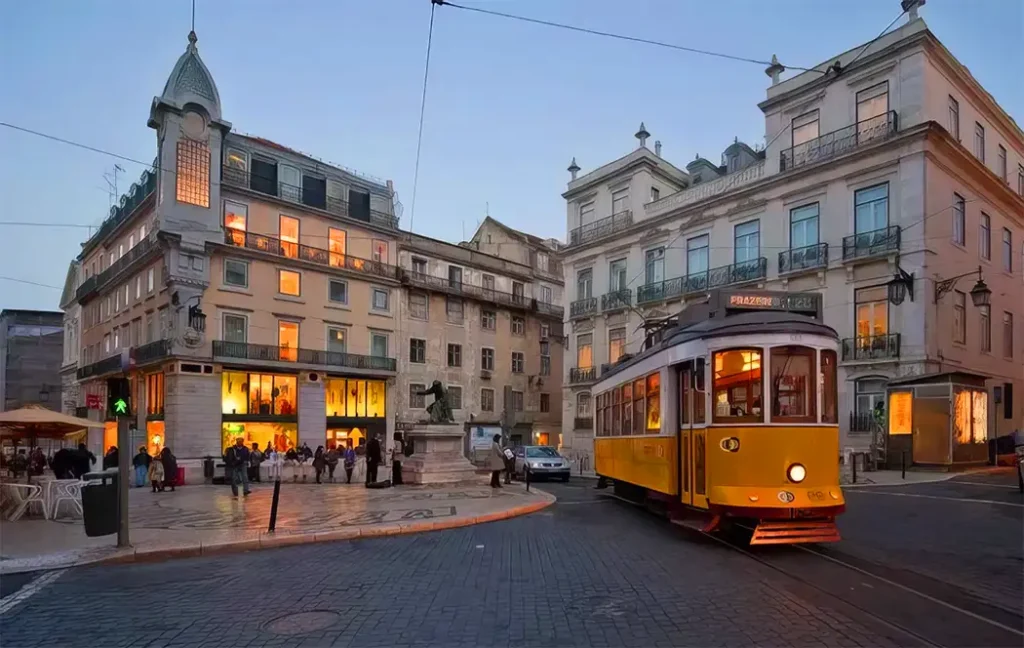
Transforming your narrative into a style reminiscent of Ronan Farrow’s eloquent and immersive storytelling, while preserving the personal anecdotes and the essence of your experience:
There we were, meandering through the storied streets of Chiado, a Lisbon neighborhood that whispers tales reminiscent of a 19th-century literary masterpiece.
Each cobblestone and corner seemed to hold a secret, a silent witness to centuries of artistic and cultural evolution.
Our journey began at the bustling Rossio Square, a crossroads of Lisbon’s vibrant life. From there, the options are as varied as the neighborhood’s history: a leisurely walk, a ride on the Baixa-Chiado metro, or a journey aboard the iconic Tram 28, an enduring symbol of Lisbon’s charm, reminiscent of a cherished heirloom that continues to enchant.
Our exploration brought us to the historic Brasileira Café. Here, amid the clatter of coffee cups and the murmur of conversations, the bronzed gaze of Fernando Pessoa met ours, his presence a bridge between the bygone Belle Époque and the bustling modern day.
Yet, Chiado’s allure extends beyond its famed café. Hidden within its embrace are treasures like the Convento do Carmo, a monument to resilience and beauty, and the National Museum of Contemporary Art, a testament to the ongoing dialogue between past and present.
And then, the grand São Carlos National Theatre, standing as a custodian of high culture. Here, the air seems to resonate with the echoes of opera, each note a thread in the rich tapestry of Lisbon’s cultural heritage.
14. Bairro Alto

Our stroll through the enchanting streets of Chiado, lined with history and whispers of past lives, led us to the pulsating heart of Lisbon’s nightlife, the Luís de Camões Square and the lively Bairro Alto. It’s in this corner of the city that the night awakens, pulsing with energy and promise.
The area is a symphony of life, where the melodic chimes of church bells harmonize with the spirited buzz of local bars. Bairro Alto is not just a neighborhood; it’s an experience, a character in Lisbon’s urban tale, vibrant and unabashed in its celebration of the night.
Daylight in Bairro Alto unveils a different aspect of its charm:
- São Roque and Santa Catarina Churches: These sanctuaries may present a humble façade, but step inside, and you’re greeted by a splendor that belies their exterior. They are like confectionery marvels, unassuming on the outside but filled with rich, unexpected beauty within.
- São Pedro de Alcântara Viewpoint: A vista that offers not just a view, but a narrative of the city’s sprawling beauty.
Navigating to Bairro Alto: Embrace our path: Start from the Baixa-Chiado station, letting the rhythm of the streets guide you to Luís de Camões Square. Or, for a touch of nostalgia, ride the Gloria Funicular at Restauradores Square, or the Bica Funicular near the river, each a journey in itself.
Our Insider Tip: To truly grasp the essence of Bairro Alto, visit as the sun dips below the horizon. Let the neighborhood’s transformation from a quaint daytime retreat to a vibrant nocturnal hub envelop you. Here, each corner, each cobblestone, tells a story of Lisbon’s past and present, a mosaic of the city’s heart and soul.
15. Miradouro de São Pedro de Alcântara
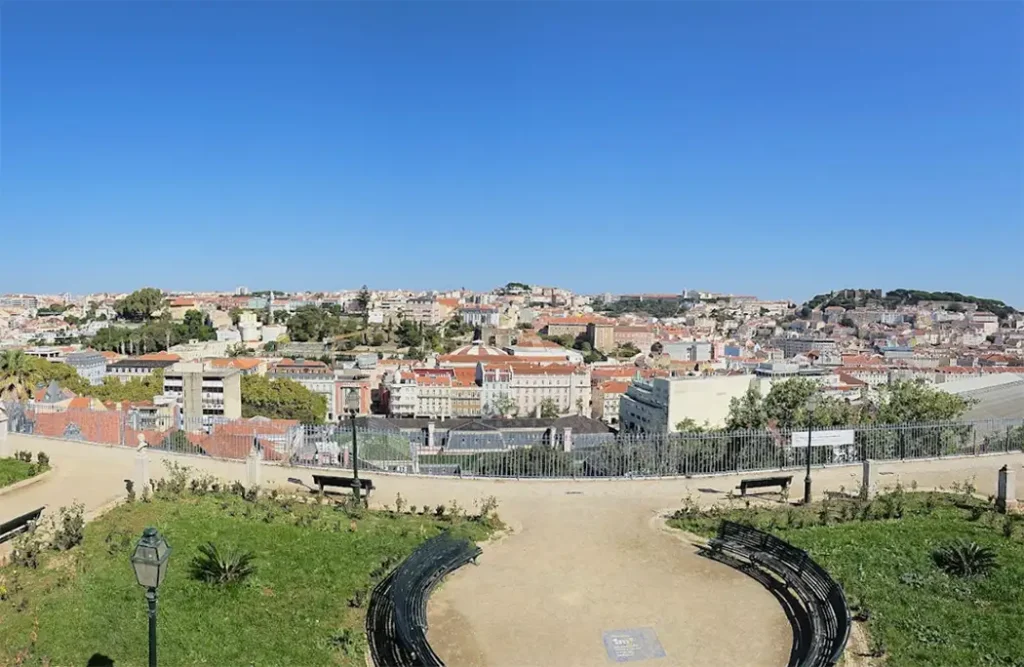
From this vantage point, the landscape of Lisbon unfolds in a breathtaking panorama.
The majestic São Jorge Castle stands as a sentinel over the city, the grand Praça do Comércio stretches out like a regal carpet, and the venerable São Vicente de Fora Church rises with quiet dignity.
It’s a tableau that captures the essence of Lisbon’s storied past and vibrant present.
This vista is so compelling, it urges even the most reserved observer to capture the moment, a siren call to smartphones, even those clinging to their last breath of battery life.
To embark on this journey to one of Lisbon’s most picturesque locales, the Gloria Funicular offers not just a ride, but a passage through the city’s layers.
Starting from Restauradores Square, it ascends, providing a transition from the bustling urban rhythm to a serene, elevated escape.
16. Miradouro de Santa Catarina
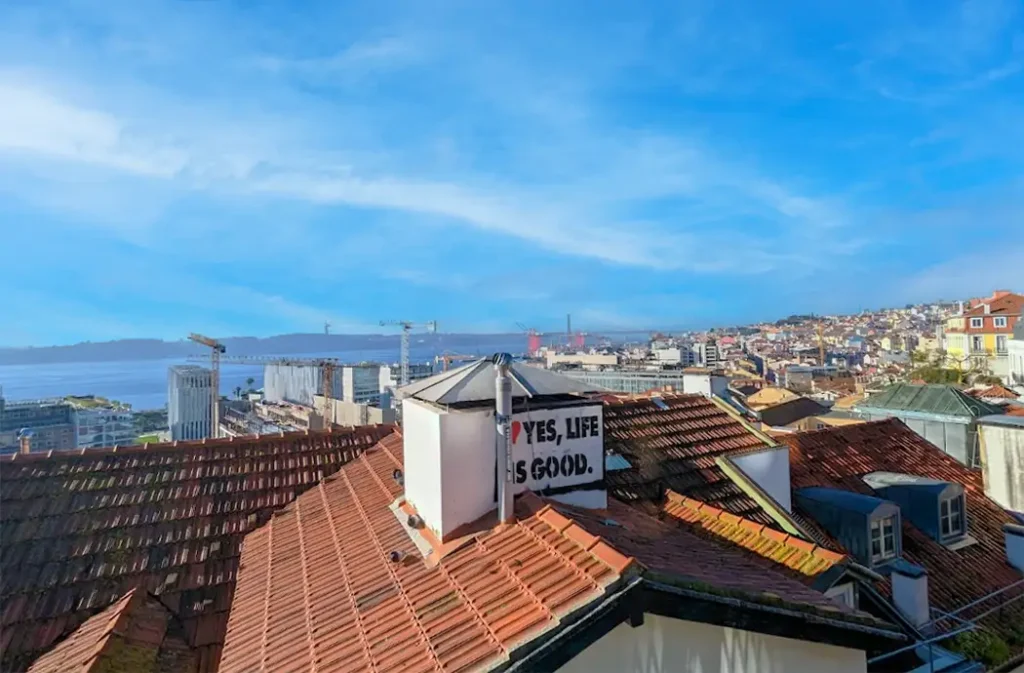
A leisurely 15-minute walk from the heart of Lisbon leads to an enchanting spot: the Santa Catarina Viewpoint.
Here, perched near the water’s edge, the view opens up to a mesmerizing sweep of the Tagus River, a vista that seems to capture the very spirit of the city.
The viewpoint, having undergone a recent revitalization, has blossomed into a beloved gathering place for the people of Lisbon, especially as the sun begins its descent.
What strikes a chord with me at this locale is the seamless blend of faces, a diverse tapestry of tourists and locals alike, each drawn here as if by some unseen magnet, all sharing in the communal experience of this magnificent view.
For those seasoned in years, the terrace offers a place of solace and reflection, a meeting point where the expansive views open up conversations and memories.
Meanwhile, for the younger crowd, the energy is palpable, reminiscent of a real-life social app, a place where glances are exchanged as easily as digital swipes.
Not far from here, yet absent from our current journey, is the Miradouro da Nossa do Monte in the Graça neighborhood – another jewel in Lisbon’s crown of viewpoints, each offering its own unique perspective on this vibrant, ever-evolving city.
Three-Day Lisbon Exploration Itinerary
Day 1 – Exploring Lisbon’s Heart
- Praça do Comércio: Begin your day at Praça do Comércio. Capture a selfie with King José I, and if you’re feeling adventurous, dip your toes in the Cais das Colunas.
- Rua Augusta: Meander down Rua Augusta, passing through the triumphal arch. Explore the shops and revel in the street performers. A recommended pastry shop nearby is Confeitaria Naciona in Praça da Figueira.
- Elevador de Santa Justa: Take a short detour to the Santa Justa Elevator. If there’s a queue, fear not; Lisbon has more to offer, so return later in the afternoon.
- Sé de Lisboa: Visit the cathedral and ascend to the Santa Luzia and Portas do Sol viewpoints.
- São Jorge Castle: Delight in panoramic views of Lisbon at sunset.
- Alfama: Immerse yourself in the charm of Lisbon’s oldest neighborhood. Enjoy a meal and experience live Fado music at Clube de Fado.
Day 2 – Exploring Belém
- Begin your day with a visit to the Jerónimos Monastery. It’s like taking a journey back in time. Explore both the exterior and interior, including the magnificent cloister.
- Now, it’s time for a delightful sin: Pastéis de Belém. Enjoy a leisurely walk in the Jardim da Praça do Império.
- Belém Tower: Capture a photo, but consider savoring the riverside stroll. The interior may not be as captivating.
- Padrão dos Descobrimentos: Climb for the view, but there’s more to explore. Make time to visit the Museu Coleção Berardo (Centro Cultural de Belém) and the National Coach Museum (Museu Nacional dos Coches).
Day 3 – Modernity and Culture
Oceanário de Lisboa: Consider beginning your day early to visit the Oceanarium, one of the largest in the world. Take a leisurely stroll through the Parque das Nações and admire the modern architecture.
How about seeing Lisbon from a different perspective? Hop on the Lisbon Cable Car for a scenic ride.
Return to central Lisbon: Explore Chiado and its 19th-century charm. Visit A Brasileira Café, the Convento do Carmo, and the National Museum of Contemporary Art.
Bairro Alto: Wrap up your day in this vibrant, bohemian neighborhood. Don’t miss the São Pedro and Alcântara viewpoints. Explore the churches, funiculars, and enjoy the nightlife that turns night into day.
Additional Tips:
If you have some extra time, consider a visit to LX Factory: A fusion of vintage and modern. Former industrial spaces transformed into creative shops and restaurants. It’s slightly off the beaten path but worth a visit, especially if you’re en route to Belém or Cascais.
Day-by-Day Activity Map
Please Note: Click in the upper left corner of the map to access points of interest organized by day.
Simply tap the star icon to save this map to your personal Google Maps collection.
Prominent Attractions Surrounding Lisbon
4-Day Itinerary – Cascais & Estoril
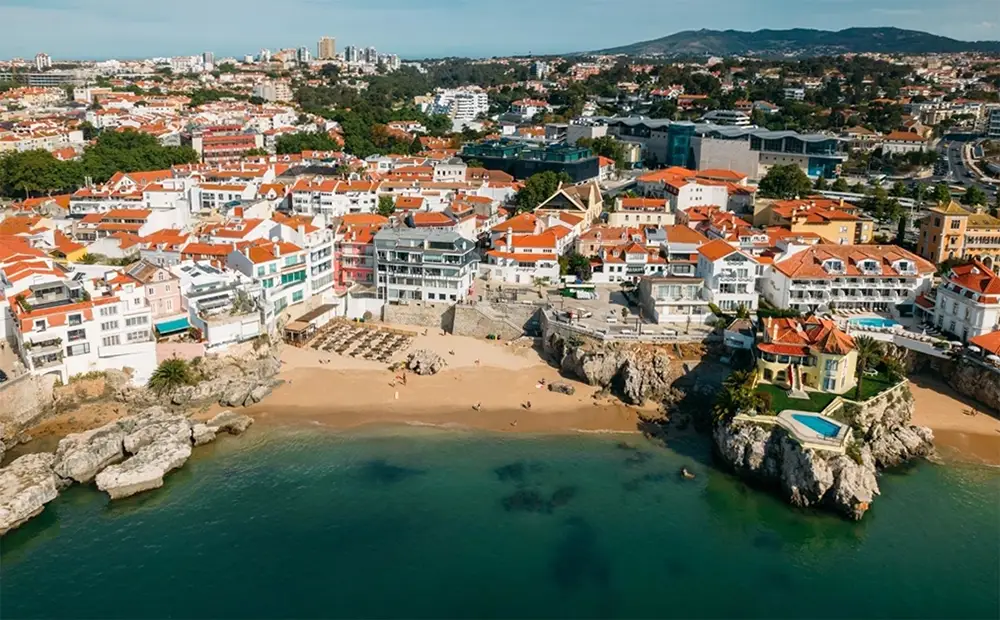
If you have more time, we have more tips for things to do in Greater Lisbon. Cascais, a charming coastal town to the west of Lisbon, is the perfect retreat to escape the hustle and bustle of the capital. It has the sea, charm, and everything you need!
For a beach experience, hop off at Carcavelos station. To explore the Estoril Casino that inspired Ian Fleming to create James Bond, stop at Estoril station.
For sightseeing and culture, continue on to Cascais and explore the town centre and the historic Rua Frederico Sousa.
We boarded a train in Lisbon (Cais do Sodré Station) for a scenic journey along the Cascais Line, enjoying magnificent views.
It’s as if the train is saying, ‘Look at what you’re missing while you’re stuck in traffic!’
Our recommendation: If you’re short on time, consider making a stop in Alcântara to visit the LX Factory.
5-Day Itinerary – Sintra

Sintra is renowned for its enchanting castles.
The three most remarkable points of interest include the Quinta da Regaleira, with its mystical garden and the enigmatic Initiation Well, the Castle of the Moors, which offers breathtaking panoramic views.
And, of course, the vibrant Pena Palace, a structure seemingly plucked from the pages of a fairy tale, where one might expect a princess to grace us with her presence at any given moment.
Embarking on our journey from Lisbon’s historic Rossio train station, we set forth on the picturesque Sintra rail line.
For those pressed for time, an enticing alternative is a guided day trip from Lisbon to Sintra, featuring stops at the rugged Cabo da Roca and the charming coastal town of Cascais.
6-Day Itinerary : Exploring Almada
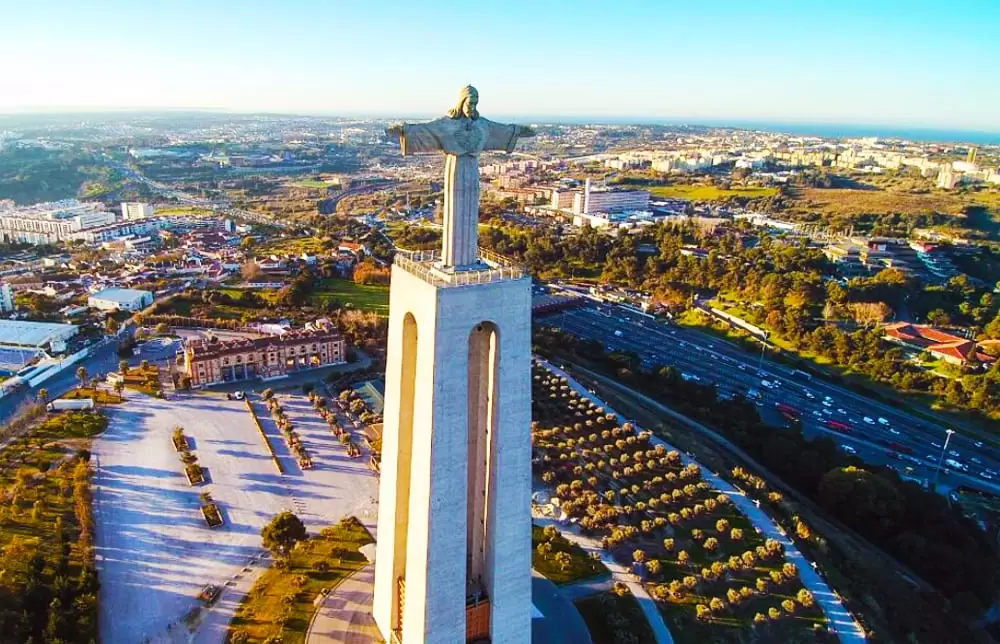
In the Lisbon region, you’ll find the majestic statue of the National Sanctuary of Christ the King in Almada, rising proudly on the opposite bank of the river, providing an awe-inspiring panoramic vista of the city.
Our suggestion: embark on a scenic journey by taking the ferry from Cais do Sodré to Cacilhas and then continue your voyage aboard bus 101. The entire excursion encompasses approximately an hour of travel time.
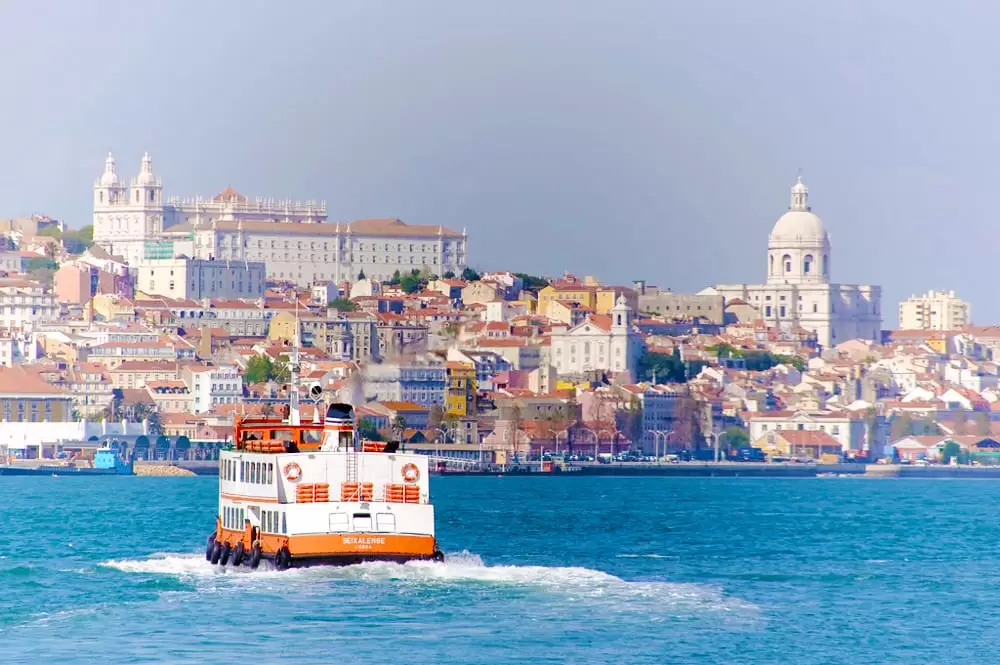
For those pressed for time, a taxi or Uber ride, priced at around €20 (a half-hour journey), provides a convenient solution.
On the western coast of Almada (Costa da Caparica), you’ll find urban beaches that offer parking and are conveniently serviced by a tourist train.
Must-Do Experiences and Tours in Lisbon
Ride the Iconic Tram 28
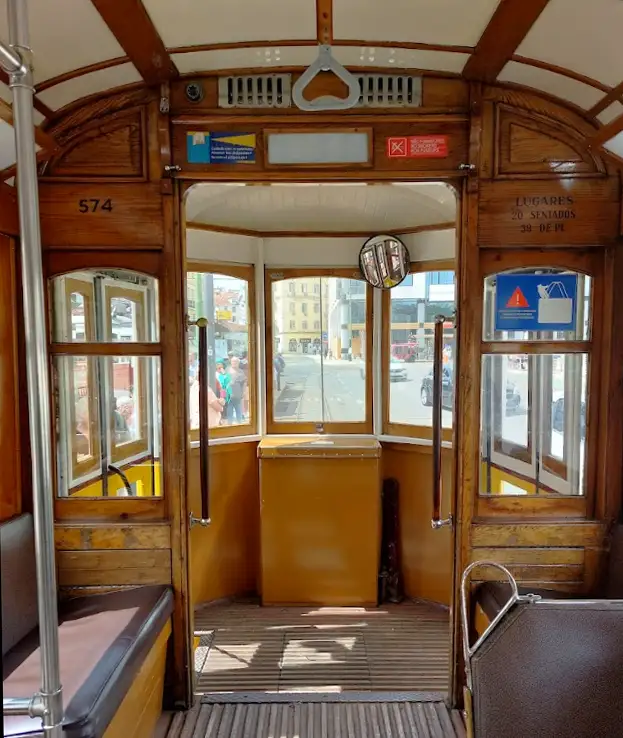
Radiating in its timeless traditional yellow hue – although a few sport vibrant colours and advertisements – it resembles a captivating journey through Lisbon’s historic neighbourhoods.
This tramway connects Martim Moniz to Campo Ourique, weaving its way through districts like Alfama, Baixa Chiado, Graça, and Estrela.
The early morning or twilight hours offer the perfect moments to savor the ride without the usual hustle and bustle.
Should you desire a more profound understanding, the Carris Museum in Alcântara, conveniently located near LX Factory, unfolds the fascinating history of Lisbon’s transportation network.
Pasteis de Belém

The Pastel de Belém is the warm, Christmas treat, its recipe a closely guarded secret known to only a select few.
Since 1837, they have faithfully adhered to the ancient recipe from the Jerónimos Monastery in the neighbourhood.
Our Suggestion: In addition to the celebrated Antiga Pastelaria de Belém, we highly recommend savoring Pasteis de Nata at Confeitaria Nacional and Manteigaria, both found in the Time Out Market or within the charming Bairro Alto district.
Savor the Sounds of Fado Music
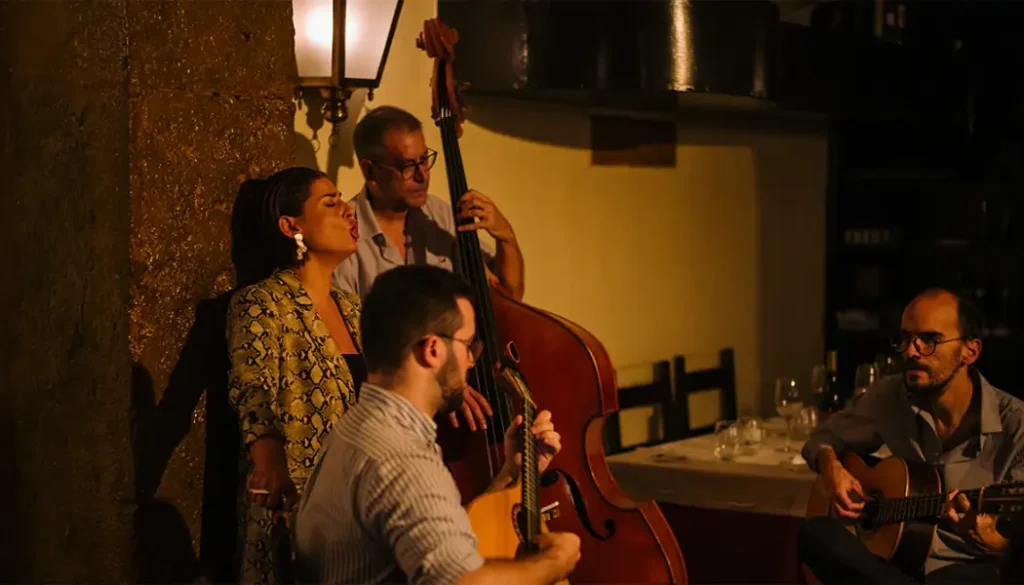
A Portuguese musical genre renowned for its melancholic vocals accompanied by traditional string instruments.
Its lyrical themes often delve into sentiments of sorrow, lost loves, or the famous “Saudade.”
This genre originated in the early 19th century during a period of significant upheaval and subsequently became the national music during Salazar’s dictatorship.
For a deeper understanding and appreciation of Fado, a visit to the Fado Museum is highly recommended. The museum boasts an impressive collection of instruments, costumes, and audio recordings of esteemed Fado artists.
To immerse yourself in the captivating world of Fado, don’t miss the opportunity to dine at the Clube de Fado restaurant, where you can enjoy mesmerizing performances by artists like Ana Maria Alves.
Traditional Lisbon Boats: Sunset Cruise
Lisbon’s allure is significantly enriched by the presence of the River Tagus. Embarking on a voyage two hours prior to sunset allows you to gracefully glide along, with the captivating silhouette of the Tower of Belém framed by the sun’s warm reflection.
Enhancing this experience further is the indulgence in a glass of wine paired with a delectable platter of cold cuts.
For those in pursuit of a truly magical encounter with Lisbon.
Explore the Quake Museum of Lisbon’s Earthquake

The seismic event of 1755 wrought a profound transformation upon Lisbon. “Quake,” the city’s latest immersive experience, harmoniously integrates video mapping, interactive technology, and cutting-edge simulators to vividly recreate the events of that pivotal year.
The museum is open to visitors from 10 am to 5 pm, seven days a week, with extended hours until 6 pm on Saturdays and Sundays.
It provides an extraordinary means to immerse oneself in history and, to a certain extent, empathize with the harrowing experiences endured by the people of Lisbon on that fateful day.
Discover the Cultural Treasures at the Gulbenkian Museum

In the northern outskirts of Lisbon, close to Campo Pequeno and nestled alongside Avenida de Berna, you’ll discover an art haven.
Enveloped by serene gardens, it proudly exhibits a wealth of treasures, ranging from ancient Egyptian artifacts to contemporary masterpieces.
In the midst of this artistic oasis, we’ve reserved a tranquil moment to savour at the garden café.
For detailed information on hours of operation, pricing, and ticket purchases, kindly refer to our website by clicking here.
Museu Nacional do Azulejo

Housed within a convent dating back to 1509, where an intricately designed Manueline-style cloister still graces the premises, you’ll discover the National Tile Museum.
Among the most ancient pieces we encountered were geometric patterns with roots in Spain, heavily influenced by Moorish aesthetics.
Accessing the museum is made easy with Bus 759, and admission is priced at €5.00.
Embark on a Half-Day Electric Tuk-Tuk City Tour
Embarking on an electric tuk-tuk, we gracefully navigate the hills of Lisbon, without a single drop of sweat.
From the meandering alleys of Alfama to the awe-inspiring viewpoints, our eco-friendly journey presents a sustainable and comfortable way to explore the city.
Where to Dine in Lisbon
Maria Catita // Captivates our taste buds with the genuine flavours of traditional Portuguese and Azorean cuisine. Beyond its enchanting ambiance, it distinguishes itself with impeccable service.
Solar dos Bicos // The restaurant’s charming atmosphere is adorned with grand stone arches and a captivating tile mural, offering Portuguese gastronomy at affordable prices.
Lucimar // Known for its exceptional service and warm family atmosphere, this eatery’s cuisine is simply delectable. Be sure to savor their house-specialty codfish. Prices are wallet-friendly.
Time Out Market // A bustling gastronomic haven, renowned for its diverse selection of culinary delights all housed under one roof.
Casa do Alentejo // Concealed behind an unassuming doorway lies a neo-Arab palace adorned with opulent Luis XV-style interiors. The exquisitely decorated dining room is where the “carne à alentejana” emerges as an unmissable standout.
A Provinciana // A quaint, intimate tavern that shines with the authenticity of Portuguese cuisine at affordable prices. The inviting ambiance is enriched by the personal touch of decorative clocks.
Cafés and Patisseries in Lisbon
Pastéis de Belém // Despite the wait in line, it’s well worth it. The venue is incredibly charming. Undoubtedly, this is the place to indulge in freshly baked Pastéis de Belém!
A Brasileira do Chiado // One of the city’s oldest cafes, a favored meeting spot for intellectuals like Fernando Pessoa. We couldn’t resist trying their renowned beef croquette. Simply delicious!
Confeitaria Nacional // Situated in the heart of Lisbon, it proudly holds the title of the city’s oldest confectionery. It introduced the recipe for “bolo-rei” (king cake) to Portugal. And, of course, we mustn’t overlook their exquisite pastéis de nata.
Versailles // Laden with a century of history and adorned in art nouveau architecture. It is highly recommended to visit the counter and savor all the delectable treats. Yes, each and every one of them!
Accommodation Options in Lisbon
Where to stay in Lisbon? The area surrounding Rossio Square and Avenida da Liberdade stands out as an excellent choice for lodging in Lisbon.
With its central location, it provides convenient access to transportation options and allows you to explore most of Lisbon’s attractions on foot.
Here are some hotel recommendations in the vicinity, catering to a range of budgets:
– €€€€€ Hotel Avenida Palace: A luxurious hotel boasting classic style, considered one of the city’s finest.
– €€€€ My Story Hotel Rossio: An elegant establishment offering upscale amenities and a breathtaking terrace view, consistently popular among visitors.
– €€€ VIP Executive Eden Aparthotel: Excellent value for your money, ranking among the top options in the city centre.
– €€ Pensão Residencial Flor dos Cavaleiros: An economical choice situated on a tranquil street.
For larger families: Lisbon Serviced Apartments: An affordable and conveniently located option, suitable for accommodating larger groups.
Getting to Lisbon
For detailed information and valuable tips, we suggest referring to the “How to Reach Lisbon” guide.
The majority of travellers arrive by air at Humberto Delgado Airport (also known as Lisbon Airport or Portela Airport).
Lisbon Santa Apolónia Station and Lisbon Oriente Station serve as the primary railway hubs connecting Lisbon to other Portuguese cities and international destinations, including Spain.
For travellers within Europe, Lisbon is also accessible by car via major highways and national roads. The A1 motorway, for instance, offers a convenient route from Porto to Lisbon, with a travel time of approximately 3 hours.
A valuable tip from someone who has spent extensive time comparing prices: If you’re considering renting a vehicle, look into DiscoverCars. This platform has allowed us to achieve savings of up to 70% on some of our journeys.
Navigating Lisbon
To explore the city, we predominantly rely on walking. Lisbon boasts a comprehensive transportation network, encompassing trams, elevators, buses, and the metro, facilitating ease of movement throughout the city.
Cartão Viva Viagem
The Viva Viagem Card serves as Lisbon’s public transportation card, providing a convenient means to pay for all your journeys.
When using the Metro, we acquire and recharge the card at automated machines or ticket counters. It comes at a nominal cost of €0.50 and can be loaded with single tickets, daily passes (€6.40), or a balance of up to €40.
Taxi & Uber
For airport transfers to hotels, taxis and Uber are readily available options. However, it’s worth noting that fares from the airport can sometimes be higher, so arranging a private transfer in advance can be a cost-effective alternative.
Tuk-tuks
Tuk-tuks are readily available throughout the city, offering guided tours. They provide a unique and convenient way to explore Lisbon, although they tend to be on the pricier side.
Bus hop-on-hop-off
Ideal for those with limited time. Various options are available, ranging from 1 to 2-day passes, with some offering combined transportation such as boat rides.
Best Time to Explore Lisbon
Durante as épocas intermédias de março a maio e de setembro a outubro. Ideal para explorar a cidade a pé, quando as temperaturas são geralmente amenas e há menos visitantes.
O alojamento é mais barato que a época alta no verão, com temperaturas e número de visitantes mais elevados. O inverno é chuvoso.
Recommended Stay Duration for Lisbon
The most favourable periods are the shoulder seasons, spanning from March to May and September to October. These months offer an excellent opportunity to explore the city on foot, as the weather is generally mild, and tourist crowds are thinner.
Accommodation costs are more budget-friendly compared to the peak summer season when both temperatures and tourist numbers soar. Winters tend to be rainy.
Useful Lisbon Tips
Lisboa Card
The Lisbon Card is a valuable pass that grants access to a range of attractions and offers unlimited use of public transportation.
Key Benefits:
- Free entry: Enjoy complimentary admission to notable sites such as the Jerónimos Monastery, Belém Tower, Santa Justa Elevator, and more.
- Skip-the-line access at select locations.
- Discounts: Avail yourself of reduced rates at museums, monuments, and various attractions.
Where to Purchase? Online, with the option to collect at designated tourist information points.
Duration: Choose from 24, 48, or 72-hour options.
Personal Note: Kindly note that the Lisbon Card does not include access to São Jorge Castle. This information can be found as a footnote in the list of things to do in Lisbon’s historic center.
Emergency Contact: Dial 112
Lisbon is generally a safe city, but in case of emergencies requiring an ambulance, firefighters, or police assistance, simply dial 112.
This emergency number is accessible from both landlines and mobile phones, even if your phone is locked or lacks a SIM card.
Tram 28 Riding Tips
The iconic Tram 28 is a must-ride experience in Lisbon, but it can also be a magnet for pickpockets, especially when it gets crowded.
In such situations, it’s essential to be extra vigilant about your belongings.
Dealing with Street Vendors
When strolling through the vibrant streets of the Baixa district, you may encounter someone discreetly whispering “haxixe?” to you. Welcome to the authentic side of Lisbon!
There’s no need to be alarmed; it’s a common occurrence. Respond politely with, “I appreciate it, but I’m not interested.”
Don’t be surprised if they attempt to offer you a gold watch next, as there’s nothing like a gold timepiece to follow a drug inquiry. Simply offer a friendly smile and continue on your way.
Take it as a compliment: these vendors seem to have a keen sixth sense for identifying free spirits.
Dining Recommendations
Authentic and excellent restaurants in Lisbon don’t rely on street solicitations to attract customers.
Comfortable Footwear Advice
Lisbon is renowned for its iconic cobblestone streets, hilly terrain, and numerous staircases. It’s not an ideal setting for stiletto heels or uncomfortable footwear.
Book Your Stay in Lisbon Now

- Wake Up to Stunning Views of the Tagus River
- Immerse Yourself in the Charm of Lisbon and Experience its Allure!
- Secure Your Reservation Now and Uncover Lisbon’s Charm!



